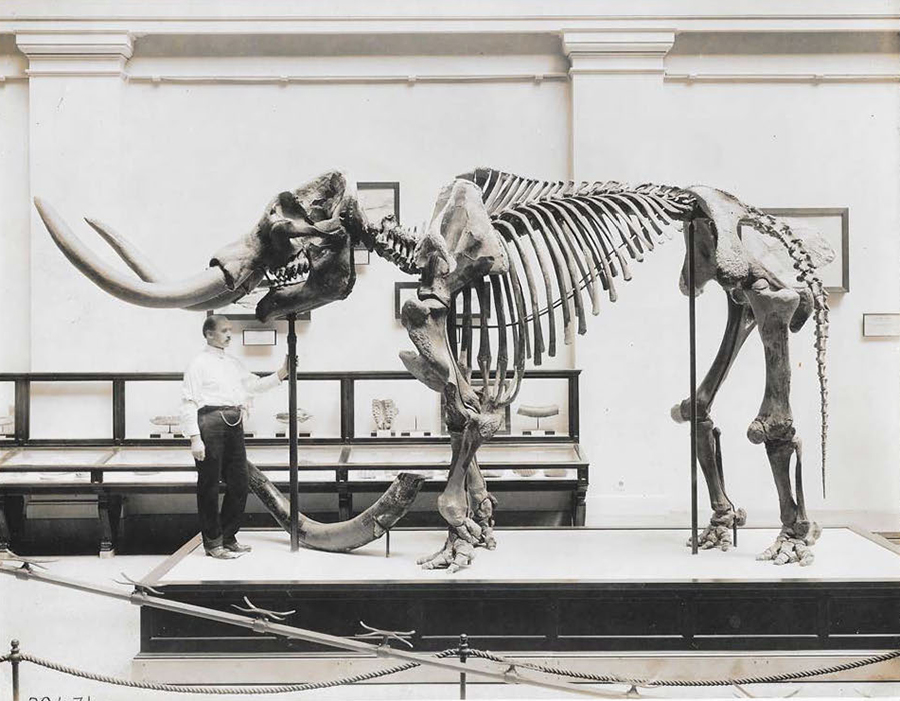The greater portion of the land area of Pulaski County was swamp lands and entered as such by original purchasers. Before drainages were constructed these lands were very wet and unhealthy, producing practically nothing but wild hay. The earlier settlers suffered much sickness from malaria and ague, many dying as a result.

After the wet lands were drained, healthier conditions prevailed, and untiring pioneers prospered, improved their homes, and made great advancements in agricultural pursuits on their farms until the farm lands in the county are second to none for raising corn, wheat, oats, clover, and all other kinds of food and vegetables.
The First Discovery
A nearly complete skeleton was found in the summer of 1914 by workmen excavating a drainage ditch through a swamp on the Pattison farm, about 15 miles northwest of Winamac, Indiana.
View information about that mastodon HERE.
Later Discoveries Near Medaryville
Bones of a pre-historic skeleton were unearthed on the Carl Huppert farm near Medaryville in 1960. Another skeleton was found on the same farm in 1961..
View information about those mastodons HERE.
